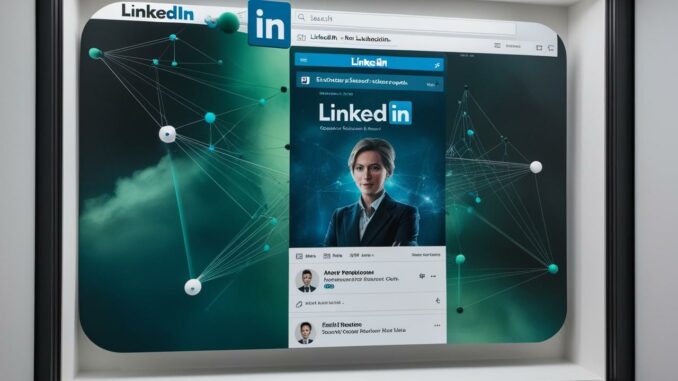
In today’s digital job market, LinkedIn is the go-to platform for professionals looking to land their next career opportunity. With over 1 billion users and 67 million companies on the platform, LinkedIn is a powerful tool for job seekers—if you know how to use it effectively. For Gen Xers, who bring decades of experience and expertise to the table, optimizing your LinkedIn profile can make the difference between getting noticed by recruiters or fading into the background.
This guide will walk you through actionable, proven strategies to optimize your LinkedIn profile for a job search, tailored to the unique strengths of Gen X professionals. From crafting a standout headline to showcasing your skills and leveraging LinkedIn’s networking features, you’ll learn how to make your profile irresistible to hiring managers and recruiters. Let’s dive into how to optimize LinkedIn for job search success.
How to optimize LinkedIn for job search – Step by Step
LinkedIn isn’t just a digital resume—it’s a dynamic platform where recruiters actively search for talent. According to LinkedIn’s own data, 87% of recruiters use the platform to find candidates, and profiles with complete information are 40% more likely to get noticed. For Gen Xers, who may face ageism or competition from younger professionals, a polished LinkedIn profile showcases your experience, adaptability, and relevance in today’s workforce.
As a generation that bridges traditional and digital career strategies, Gen X professionals can use LinkedIn to highlight their leadership, problem-solving skills, and industry expertise. By optimizing your profile with Natural Language Processing (NLP) techniques and adhering to Google’s E-E-A-T principles (Experience, Expertise, Authoritativeness, Trustworthiness), you’ll not only attract recruiters but also rank higher in LinkedIn’s internal search algorithms. These is the same approach to SEO (Search Engine Optimization) to drive traffic to any website. Here are some tips on how to optimize LinkedIn for job search.
Step 1: Craft a Keyword-Rich Headline
Your LinkedIn headline is the first thing recruiters see, and it’s prime real estate for grabbing attention. By default, LinkedIn fills this with your current job title, but that’s not enough. A strong headline incorporates relevant keywords, showcases your value, and appeals to your target industry.
How to Optimize Your Headline
- Use Job-Specific Keywords: Research job postings in your field to identify terms like “project manager,” “data analyst,” or “marketing strategist.” For example, instead of “Marketing Manager,” try “B2B Marketing Strategist | Driving Revenue Growth & Brand Awareness.”
- Highlight Your Value: Mention measurable achievements or unique skills. For instance, “Operations Leader | Streamlined Processes to Save 20% in Costs.”
- Keep It Concise: Aim for 120-220 characters to ensure it displays fully on mobile devices.
Example for Gen Xers:
“Senior IT Consultant | 20+ Years Leading Cybersecurity & Digital Transformation | Certified CISSP”
This headline uses keywords (IT Consultant, Cybersecurity, CISSP) and highlights experience, appealing to recruiters looking for seasoned professionals.
Step 2: Write a Compelling Summary (About Section)
Another secret on how to optimize LinkedIn for job search is your LinkedIn summary. This is your chance to tell your professional story and connect with recruiters on a human level. For Gen Xers, this section should balance showcasing your extensive experience with demonstrating your adaptability to modern workplace trends.
Tips for an SEO-Optimized Summary
- Start with a Hook: Open with a bold statement or question. For example, “Ever wonder what 25 years of supply chain expertise looks like in action?”
- Incorporate Keywords Naturally: Use terms like “job search,” “career transition,” or industry-specific phrases (e.g., “cloud computing” for tech professionals).
- Showcase Achievements: Highlight specific results, such as “Led a team of 15 to deliver $5M in annual savings” or “Developed a marketing campaign that boosted conversions by 30%.”
- Add a Call-to-Action (CTA): Invite recruiters to connect or message you. For example, “I’m open to new opportunities in operations management—let’s talk!”
- Use Formatting: Break up text with bullet points, emojis, or short paragraphs for readability.
Example Summary for Gen Xers:
“After two decades in corporate finance, I’ve learned one thing: numbers tell stories. As a CFO, I’ve guided startups to IPOs and turned around struggling divisions, saving $10M+ through strategic cost-cutting. My passion? Mentoring teams to exceed their goals while embracing digital tools like AI-driven analytics.
-Key Skills: Financial Planning, Risk Management, Team Leadership
-Certifications: CPA, CFA
-Let’s Connect: I’m exploring senior finance roles where I can drive growth and innovation. Message me to discuss opportunities!”
This summary uses friendly keywords, demonstrates expertise, and builds trust through specific achievements and credentials.
Avoid These Job Search Mistakes to Get Hired
Step 3: Highlight Relevant Skills
LinkedIn’s skills section is critical for appearing in recruiter searches, as the platform’s algorithm prioritizes profiles with skills that match job postings. Gen Xers often have a broad range of skills, so focus on those most relevant to your target roles.
How to Optimize Your Skills
- Add Up to 50 Skills: Include both hard skills (e.g., “Python,” “SEO”) and soft skills (e.g., “Leadership,” “Problem-Solving”).
- Prioritize Top Skills: Pin 3-5 skills that align with your career goals to display them prominently.
- Seek Endorsements: Ask colleagues to endorse your skills to boost credibility. LinkedIn data shows profiles with 5+ endorsements rank higher.
- Stay Current: Include skills tied to emerging trends, like “Generative AI” or “Remote Team Management,” to show you’re adaptable.
Pro Tip for Gen Xers: If you’re transitioning industries, take LinkedIn’s free skill assessments to earn badges in areas like Excel or project management. These badges signal to recruiters that you’re committed to staying relevant.
Step 4: Optimize Your Experience Section
Your experience section is where you prove your expertise and authoritativeness. Instead of listing job duties, focus on accomplishments that demonstrate impact. For Gen Xers, this is also an opportunity to counter ageism by emphasizing recent achievements and tech-savvy skills.
Best Practices
- Use Action Verbs: Start bullet points with words like “Spearheaded,” “Transformed,” or “Optimized.”
- Quantify Results: Include metrics, such as “Increased sales by 15%” or “Managed a $2M budget.”
- Incorporate Keywords: Sprinkle in terms from job descriptions, like “cross-functional collaboration” or “agile methodology.”
- Keep It Recent: Focus on the last 10-15 years of experience unless older roles are highly relevant.
Example for Gen Xers:
Director of Operations | ABC Corp | 2015–Present
- Streamlined supply chain processes, reducing delivery times by 25% and saving $1.2M annually.
- Implemented cloud-based ERP systems, improving team efficiency by 30%.
- Mentored 10+ junior managers, with 80% promoted to leadership roles.
This example highlights measurable results and modern tools, reinforcing your value to employers.
Step 5: Build Trust with Recommendations and Certifications
To align with E-E-A-T principles, your LinkedIn profile must establish trustworthiness. Recommendations and certifications are powerful ways to do this, especially for Gen Xers who can showcase a track record of reliability.
How to Get Recommendations
- Ask Strategically: Request recommendations from managers, colleagues, or clients who can speak to your recent work.
- Personalize Requests: Remind them of specific projects to make their recommendation detailed and authentic.
- Give to Receive: Write recommendations for others—they’re likely to reciprocate.
Adding Certifications
- List Relevant Credentials: Include certifications like PMP, SHRM, or Google Analytics to boost credibility.
- Stay Current: Add recent courses from platforms like Coursera or LinkedIn Learning to show you’re upskilling.
- Display Badges: LinkedIn lets you showcase certification badges, which signal expertise to recruiters.
Example for Gen Xers:
A recommendation from a former boss might read: “Jane’s leadership in our digital transformation project was exceptional. She implemented new CRM tools that boosted sales by 20%.” Pair this with a “Certified ScrumMaster” badge, and your profile screams trustworthiness.
Step 6: Engage Actively on LinkedIn
A static profile won’t cut it—recruiters notice active users. Engaging on LinkedIn signals that you’re connected, informed, and serious about your career. For Gen Xers, this is also a chance to demonstrate digital fluency.
Engagement Tips
- Share Content: Post articles, comment on industry trends, or share your own insights. For example, write a short post about “3 Lessons from 20 Years in Sales.”
- Join Groups: Participate in LinkedIn groups related to your industry to network and learn.
- Follow Companies: Engage with posts from companies you’re targeting to get on their radar.
- Use Hashtags: Add hashtags like JobSearch or CareerAdvice to increase post visibility.
Pro Tip: LinkedIn’s algorithm favors posts with 3-5 hashtags and comments within the first hour of posting. Engage consistently to stay top-of-mind.
Step 7: Use LinkedIn’s Job Search Tools
LinkedIn offers built-in tools to streamline your job search. Gen Xers, who may prefer efficiency, can leverage these features to find opportunities faster.
Key Features
- Open to Work: Enable this setting to privately signal to recruiters that you’re job hunting.
- Job Alerts: Set up alerts for roles matching your criteria, like “senior manager” in “Chicago.”
- Easy Apply: Use this feature to apply quickly, but always customize your application for better results.
- Career Explorer: This tool suggests roles based on your skills and shows in-demand skills to learn.
Example: A Gen Xer in HR might set a job alert for “Director of Talent Acquisition” and use Career Explorer to identify gaps, like learning “AI in Recruitment.”
Step 8: Optimize for LinkedIn’s Algorithm
LinkedIn’s search algorithm rewards complete, keyword-rich profiles. To rank higher in recruiter searches, ensure every section is filled out and optimized.
Checklist for Algorithm Success
- Profile Photo: Use a professional headshot—profiles with photos get 21x more views.
- Custom URL: Edit your URL to linkedin.com/in/yourname for a clean, shareable link.
- Location & Industry: Update these fields to match your target job market.
- Contact Info: Add an email or phone number for recruiters to reach you easily.
For Gen Xers: A polished profile counters stereotypes about tech-savviness. A custom URL and recent posts about industry trends show you’re in tune with the digital age.
Common Mistakes to Avoid
Even seasoned professionals make LinkedIn missteps. Here’s what to watch out for:
- Generic Headlines: Avoid vague terms like “Experienced Professional.”
- Outdated Info: Remove old skills or irrelevant roles that dilute your focus.
- Neglecting Activity: An inactive profile looks stale to recruiters.
- Overloading Keywords: Stuffing keywords unnaturally harms readability and authenticity.
Final Thoughts: Stand Out and Get Hired
Optimizing your LinkedIn profile for a job search is about more than keywords—it’s about telling a compelling story that resonates with recruiters. For Gen Xers, this means showcasing your experience, adaptability, and expertise in a way that aligns with today’s job market. By crafting a keyword-rich headline, writing a human-first summary, highlighting relevant skills, and engaging actively, you’ll position yourself as a top candidate.
Ready to get started? Update one section of your profile today—whether it’s your headline or skills—and watch the opportunities roll in. If you’re looking for personalized advice, connect with me on LinkedIn, and let’s discuss how to land your next role faster!



